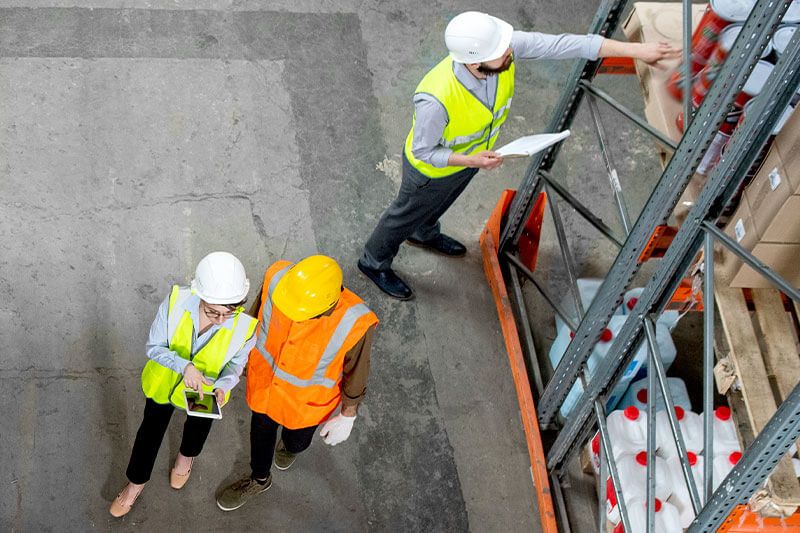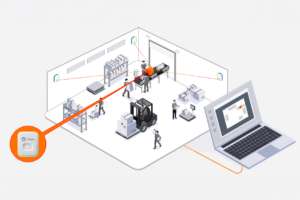Contents
When looking back at history, the history of your company, or your career history, was there ever a situation where having an employee tracking system could have made a positive impact?
Employee monitoring over the past few hundred years was a difficult task for both employers and employees. The difficulties mainly came from not having the ability to implement technologies for maximizing the benefits and eliminating the potential negative aspects of employee tracking.
From the perspective of systems thinking, employee tracking is clearly an asset (unless done poorly). It can drastically increase worker productivity, increase the efficiency of the overall business, and increase worker safety.
From the perspective of employees, employee tracking can be a liability for some or a system that will save their lives if something goes wrong, the reason they have a secure job, or the reason for their higher salary/wage.
What are employee monitoring systems and how do they work?
Employee monitoring systems come in many shapes and sizes, such as video surveillance, keycards and biometrics, online activity monitoring, GPS tracking, employee monitoring, and productivity software, and the Internet of things (IoT).
Typically, within an organization, one or more of these employee monitoring solutions are put in place.
Different types of work and workers require different monitoring solutions.
Let’s take a brief look at each of the types of employee tracking systems to better understand what they are and why they are used.
Video surveillance
Video surveillance is the most common form of employee monitoring. It uses CCTV cameras and can confirm people are in a specific area (such as their desk) but struggle to help estimate worker productivity.
There are also privacy concerns with implementing video surveillance systems within workplaces due to violations of workplace privacy.
Keycards and biometrics
Keycards and biometric stations are forms of employee monitoring made to allow, or prevent, access to certain areas or tools (software and hardware) and to track the physical locations of workers without being as invasive as video surveillance systems.
Biometric stations serve the same purpose as keycards and are far more secure but cost more to implement. They work by installing systems for scanning fingerprints or eyes.
Online activity monitoring
It’s possible to monitor online activities coming into and out of the workplace, including email. These systems are made to prevent malicious activity and monitor unproductive online activities such as the inappropriate use of social media while at work or work email addresses.
GPS tracking
Employee monitoring using GPS is for situations where employees are not always going to be in a specific location to perform their work—they are out in the field at a variety of locations.
Companies using GPS tracking for their workers out in the field should make their employees aware of the use of a GPS tracking system. GPS tracking is done by installing tracking applications on mobile devices or by GPS tracking devices.
Employee monitoring and productivity software
Employee monitoring and productivity software is the simplest, most widely used and least invasive employee monitoring solution for employees using computers. They are made to quantify performance, eliminate unproductive work, simplify workflows, and provide discipline and focus. Computer software varies in price considerably depending on its complexity and use cases.
Internet of Things (IoT)
IoT is a major part of the fourth industrial revolution and is the most effective and technologically advanced form of employee monitoring and indoor tracking available today. It allows machines and humans to work safely with each other through the ability to rapidly communicate a lot of information between people and computers. It also allows many human and non-human systems to be tracked, monitored, and coordinated all at the same time, leading to increased safety and efficiency.
Safety
One of the main purposes of IoT for employee monitoring is to improve occupational safety. They can replace the key card and biometric systems while providing improvements in collision prevention, lone worker safety, roll-call, and well-being monitoring for seniors, infants, and healthcare patients.
Efficiency
IoT devices are the most versatile and effective employee monitoring solution for real-time asset tracking, employee tracking, forklift tracking, process tracking, yard management, patient flow, and EMS inventory management.
Considerations with employee monitoring
Privacy
Employee monitoring in the workplace needs to always respect the privacy of workers. For example, there should never be surveillance cameras in washrooms or monitoring software installed on personal devices.
Closed system
Employee monitoring solutions need to be closed systems that only monitor activities related to the workplace. Employers monitoring the activities of their employees outside of work beyond relevant drug testing measures is a violation of privacy and should not be practiced.
Independent of personal devices
Everyone owns a smartphone and/or computer now, but these devices should be kept separate from work. Employers using smartphones or computers for employee monitoring purposes should be providing their employees with a smartphone or computer dedicated to work that is separate from their personal devices. This helps protect the privacy of both the employer and employee.
What are the myths about employee monitoring systems?
Employers who track their employees do not trust them
This could not be further from the truth. Employers emphasize putting employee monitoring systems in place to ensure the safety of their employees, not to track their every move due to trust issues.
Monitoring systems help employers organize and plan their workflows to match the capacity of their employees. This leads to better job satisfaction and more efficient operation of the business.
Employee monitoring systems invade privacy
Employers and employees both know everyone cannot be productive 100% of the time they are working. Everyone wants to rest once in a while when it’s needed, and no one likes to feel like they are constantly being watched.
However, employees should not expect total privacy with tracking systems when they are working in dangerous situations or with company-issued equipment. Each country has different laws surrounding employee privacy, and workers should have an understanding of what employers are tracking and what they are not allowed to track.
Employee monitoring systems only benefit employers
Tracking systems should be transparent and give the employees the ability to also view their tracking data if they want to. This helps identify what an employee may be doing well and what they are struggling with or drastically improve their safety while on the job. Employee monitoring solutions are ultimately made to make conditions better for the employees and not the employer. Safer and efficient working conditions lead to happier, healthier, and wealthier employees in the long run.
How do employee monitoring systems ensure safety and efficiency at the same time?
Employee monitoring systems, especially IoT-enabled monitoring systems, improve both worker safety and efficiency in several ways. They can provide an extra layer of security, preventing workplace injuries caused by human-machine interactions, and help machines and workers work more efficiently together.
Employee monitoring systems provide another way to monitor and analyze worker performance to discover new and improved ways of workflows not possible through traditional means of observation. Employee tracking systems help both employers and employees gain a full understanding of what is happening within the workplace. By using tracking, systems companies can learn how to make their employees safer and more efficient while at the same time improving the workflow logistics of their business operations.
What are the benefits of employee monitoring with UWB RFID for the employees?
Lone worker safety
Lone worker safety is improved through employee monitoring systems, especially UWB RFID tracking systems, through accident/risk monitoring. They allow workers to be monitored when working in high-risk and/or remote work environments alerting management of safety concerns such as falls, collisions, prolonged inactivity, or use of a panic button if a lone worker is under duress
Effective and fast mustering roll-call
Effective roll-call systems integrate with both time-tracking and attendance systems for monitoring employees, visitors, and contractors working onsite. UWB RFID tracking technology supports integration with time-tracking and attendance systems while also offering cloud computing integrations, sleek tags to replace traditional ID badges, and the ability to roll-call over a large area while also identifying specific locations/clusters of workers within the area
Collision avoidance
Did you know that about 1 in 6 workplace fatalities are forklift-related? (1) Employee monitoring systems can significantly reduce workplace injuries related to forklifts, robots, and industrial trucks. UWB RFID tracking systems allow for automatic audiovisual alerts and adjustments to the activity of forklifts, robotics, and industrial trucks in proximity to workers in real-time to prevent workplace injuries and increase operational efficiencies.
Top 3 efficiency features of employee tracking
Better time management
Tracking systems allow the efficient use of both workflow and workspace optimization, especially by using UWB RFID tracking within indoor environments. They can automatically enforce specific workplace rules such as physical distancing, zone access control, and maximum capacity limits. When in place, tracking systems can generate high volumes of data for further analysis to help differentiate between value-added and non-value added employee activities
Yard management
Employee tracking systems using UWB RFID technology provide a real-time view of material handling, safety, security, and turnaround time through RTLS yard management. They are used to automatically direct trailers to available docking stations to eliminate ques, automatically check-in and check-out trailers at the gates to the yard, and integrate with a forklift, robotic, and employee systems to improve the yard loading and unloading times
Real-time asset tracking
UWB RFID tracking systems remove inefficient asset retrieval times, lost items, stolen items, and misplace assets within the workplace. They allow for geo-fencing of company assets to limit the movement of assets within the workplace to ensure they stay within designated areas.
Case study on employee tracking: Paris Metro
Different situations require different monitoring solutions. However, IoT systems are the most versatile and useful for many situations. For example, Litum provided an IoT ultra-wideband (UWB) RFID employee tracking for monitoring the underground construction of the Paris Metro.
A network of receivers and sensors were mounted throughout the tunnel, and employees wore UWB RFID-based sensors. The underground tunnel was approximately 22 kilometers (20 miles) long and would have up to 400 workers operating within the tunnel in potentially dangerous equipment at the same time.
The system allowed each worker’s location to be monitored with an accuracy of about 50 cm (19,7 inches). The precise location capabilities allowed alerts to be automatically generated if unauthorized workers entered restricted or dangerous areas within the tunnel. It also allowed for quick roll-calls and fast responses to injuries or other emergencies within the tunnel.
Employees working on the Paris Metro were confident their tracking system would help protect them while completing the Paris Metro allowing the job to be completed in a safe and timely manner.
Why are employee tracking badges important for employees?
Tracking badges improves the quality of both the work and work environment for employees. In the Paris Metro example, we saw tracking badges eliminate the need for assessing if an area is safe to be in or not for certain employees, allow for quick responses to injuries and dangerous situations arising inside of the tunnel during construction, and quick roll-calls to make sure everyone is present or if anyone is missing.
Beyond the Paris Metro, tracking badges are an important tool in any indoor working environment. It can alert employees if they are getting too close to high-risk areas, such as rooms for patients with highly contagious diseases or machines that could harm employees if they get too close during the machine’s operation.
Tracking badges allow supervisors and medical personnel to be alerted quickly if an employee has stopped moving due to an injury or is moving into an area putting their safety at risk or the businesses operating at risk of disruption.
Interested in learning how Litum can help you with employee tracking? Reach out to us today and we will help get you set up with our Ultra-Wide Band (UWB) RFID tracking system.




